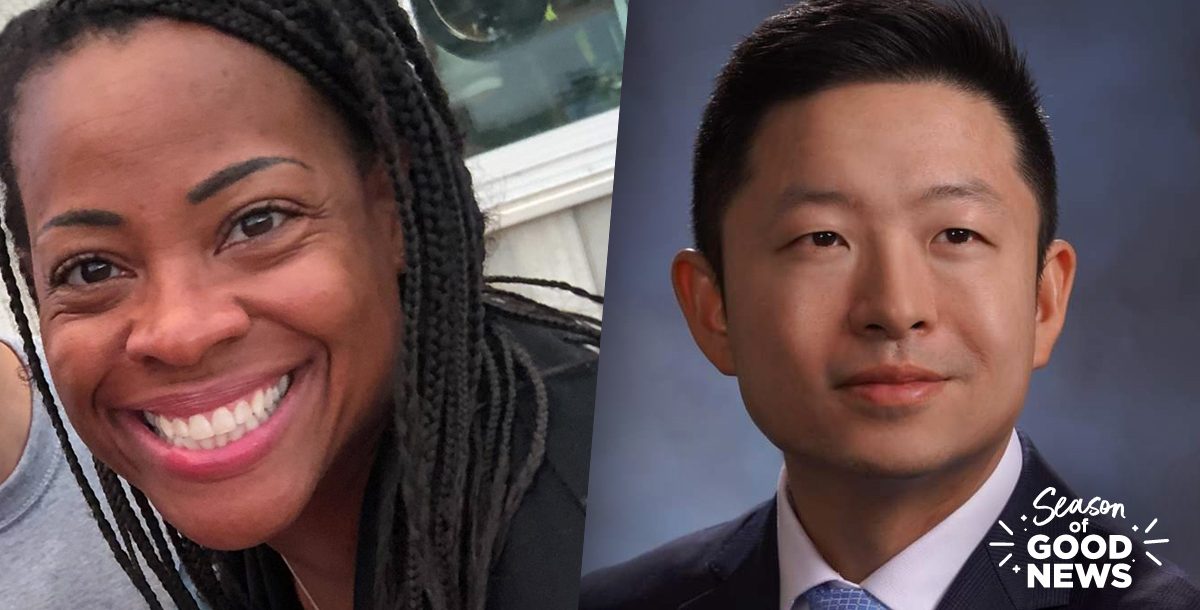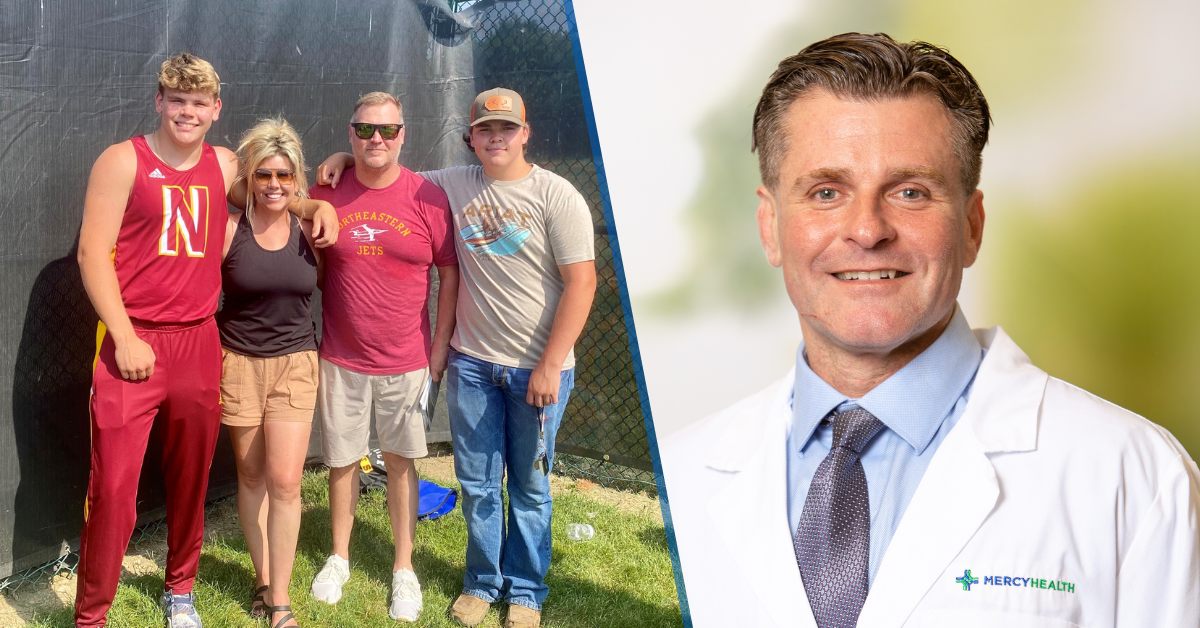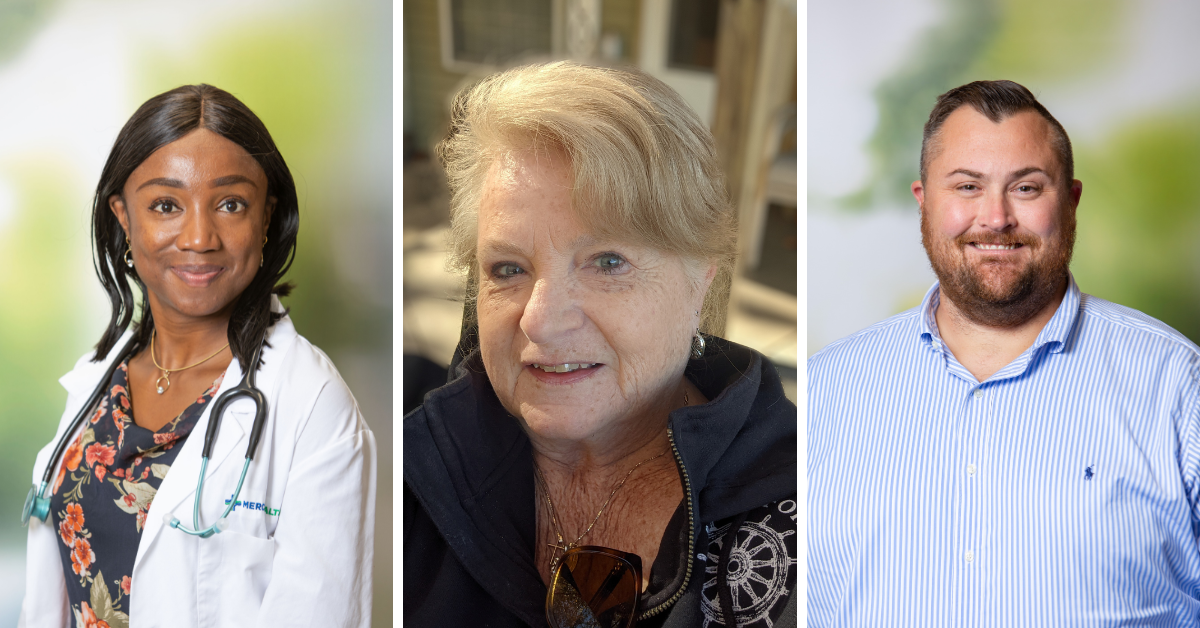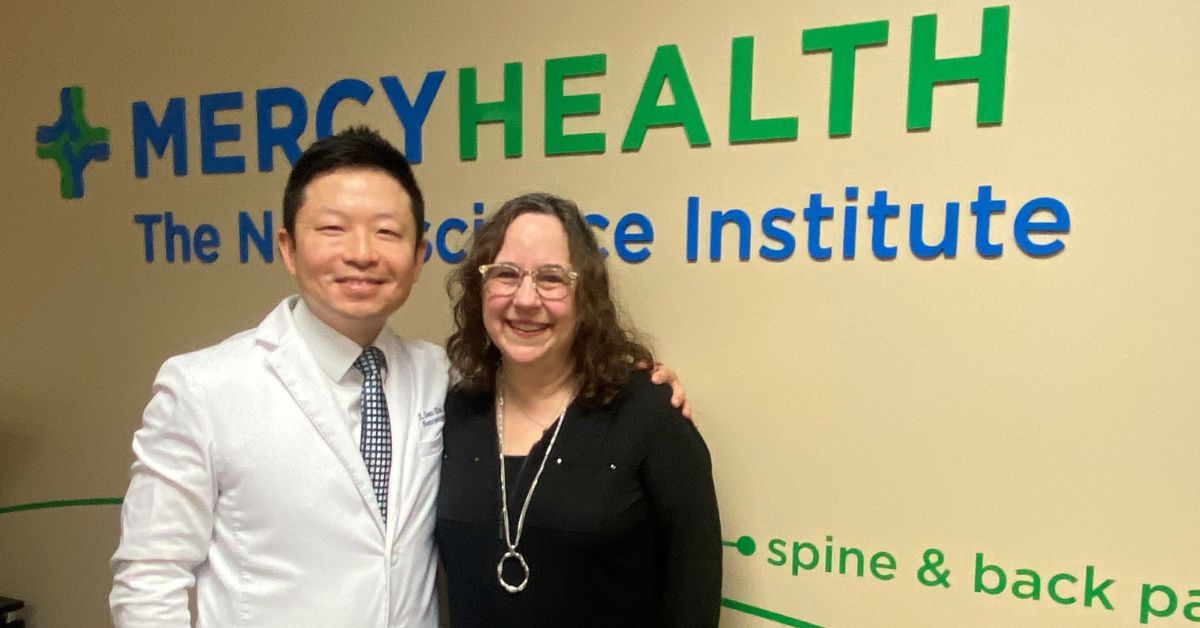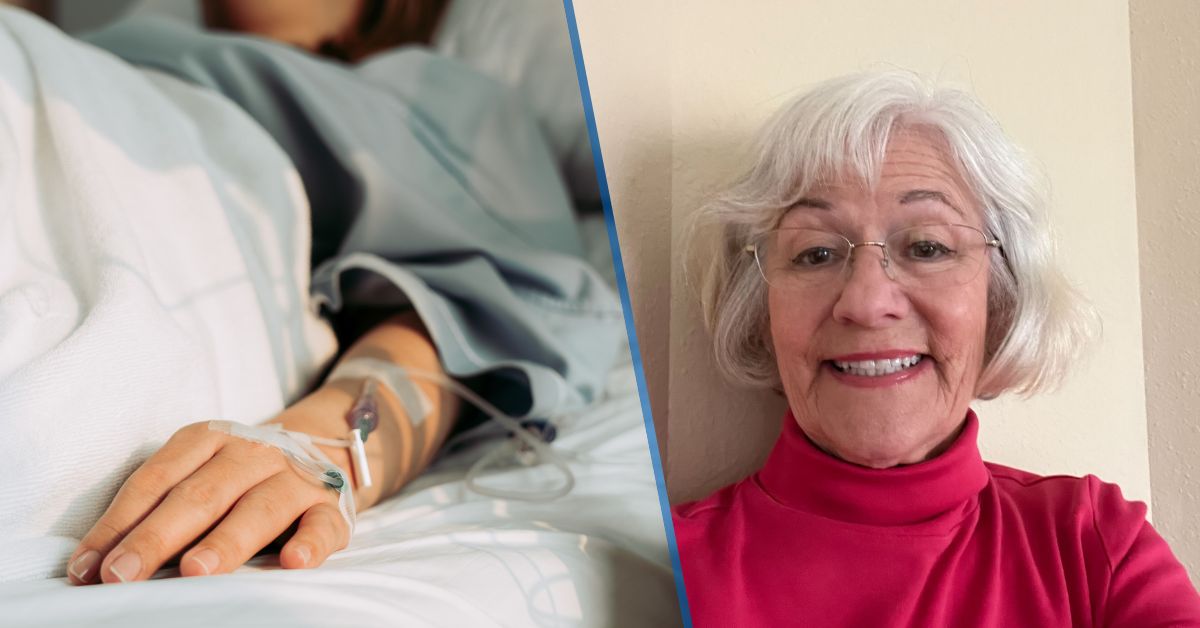For nearly a decade, Jacquelyn Layson (pictured above, left) has lived with severe back pain.
A trooper with the Ohio State Highway Patrol in the Toledo, Ohio area, 50-year-old Jacquelyn shares that it was a result of a series of car accidents coupled with long days sitting in a car and a heavy gear belt wrapped around her waist. All of this brought her to a point where her back pain was so difficult that she considered retiring from the job she loved.
That is until she consulted with Xin Sean Xin, DO, (pictured above, right) one of our neurosurgeons and the only surgeon in northwest Ohio who performs the back surgery that offered Jacquelyn immediate relief.
“I was crying when I saw him after the surgery,” she recalls. “He fixed me. He literally fixed me. He gave me longevity for my job, and that in turn made it so I can still do what I’m doing to help others.”
Dr. Xin is a fellowship-trained surgical neuro-oncologist at Mercy Health – St. Vincent Medical Center who specializes in minimally invasive, robotic and motion preserving/restoring surgery for the spine. He shares that he previously knew Jacquelyn as a neighbor. However, it wasn’t until she had sought him out as a patient that he recognized her as a candidate of lumbar disk arthroplasty, also known as a total disk replacement.
During a total disk replacement, the surgeon replaces the damaged disk with an artificial one. Unlike the traditional surgery that would fuse two or more vertebra together in order eliminate abnormal painful motion from a damage and degenerated disk, a total disk replacement restores normal movement. Approved by the Food and Drug Administration (FDA) more than a decade ago, the procedure is still not widely used and is only performed by Dr. Xin in the northwest Ohio region.
“Instead of fusing the spine, which is not physiologic, the better alternative is to replace the disk totally. You restore normal motion and significantly reduce the likelihood of needing another surgery in the future,” Dr. Xin explains. “I’m very glad Jacquelyn was able to have immediate pain relief, which is the best possible outcome. She went home the next day and was walking around on just ibuprofen for incisional pain. That’s an incredible recovery.”
Because of the proximity of the major blood vessels with the organs, Junaid Akbani, MD, one of our vascular surgeons, was asked to assist in this finessed operation. Vascular surgeons are experts in the diseases as well as conditions of arteries, veins and all major blood vessels of the body except those inside the heart and brain.
Traditional spine surgery is done with an incision through the muscles of the back. In order to perform this surgery, an incision is made on the abdomen. This approach requires moving the abdominal organs and blood vessels in front of the spine out of the way, so that the neurosurgeon can approach the spine and disk space.
“This technique is a retroperitoneal approach, which actually allows surgeons to avoid manipulating and touching the intestines, helping the patient not develop scar tissue around them,” Dr. Akbani says. “The surgical aspect of the procedure requires delicate movement of blood vessels, the peritoneal cavity, the kidney/ureter, nerves, muscle and soft tissue.”
“Over the course of the years, I was doing multiple treatments – massages, physical therapy, medications, injection – but everyone was recommending fusion,” Jacquelyn shares of life before her surgery. “A lot of my coworkers were getting fusions because of back problems. However, then they were having back problems after that.”
Dr. Xin explains that a fusion – fusing two or more vertebra together – can often correct the problem leading to back pain but can then lead to future problems. This is because the disk above and below the fusion are now being strained.
However, with a replacement, the spine continues to move as normal.
“Because pain can come from a variety of sources – including muscle, nerves, multiple joints – replacing one disk may not be the solution for all patients,” Dr. Xin adds.
But again, fortunately for Jacquelyn, she was the perfect candidate.
“Her story is just the pinnacle of what can be achieved with the right surgeon, the right technique, the right patient and the right team.” Dr. Xin says.
One day after her surgery, Jacquelyn was home. And during her two-week post operation visit on Nov. 21, she noted that she was already feeling great and looking forward to returning to work in February of 2023.
“Dr. Xin gave me the opportunity to continue to work, to continue to have an impact on others’ lives,” she says.
The Mercy Health – Toledo Neuroscience Institute is located on the campus of Mercy Health – St. Vincent Medical Center.
This holiday season, we are celebrating by spreading the good news! Read more thankful stories, like this one, that feature our team members, patients and the wonderful communities we are blessed to serve.
Also, learn about the neurology and neurosurgery services we provide at Mercy Health.


